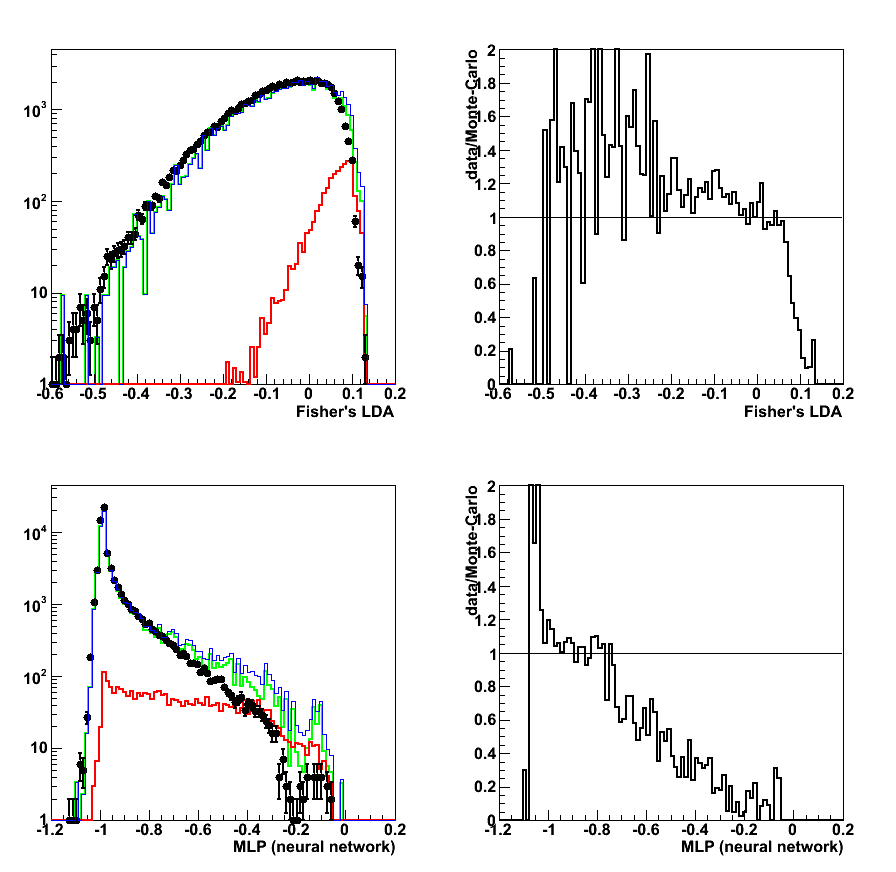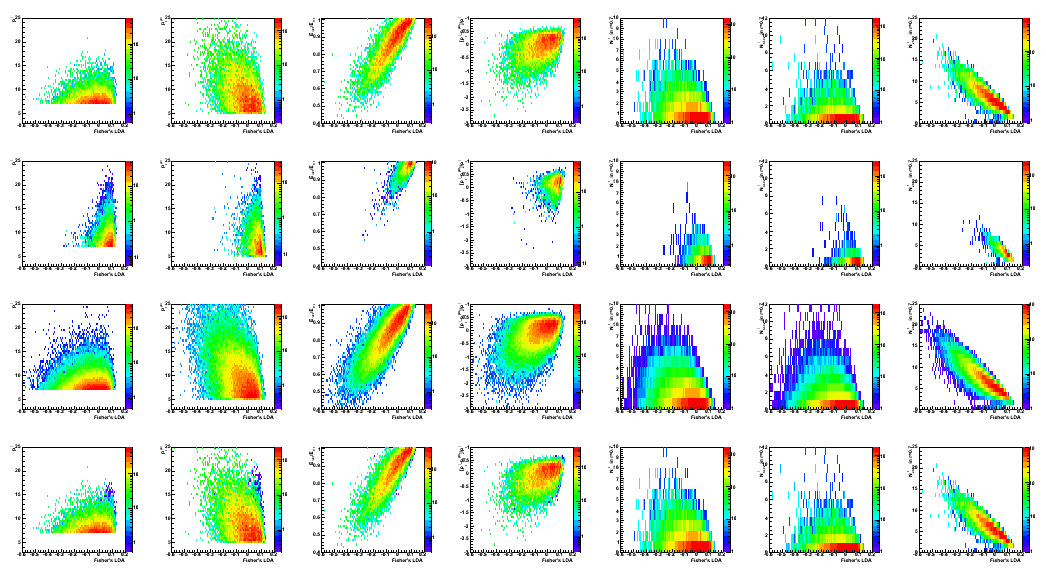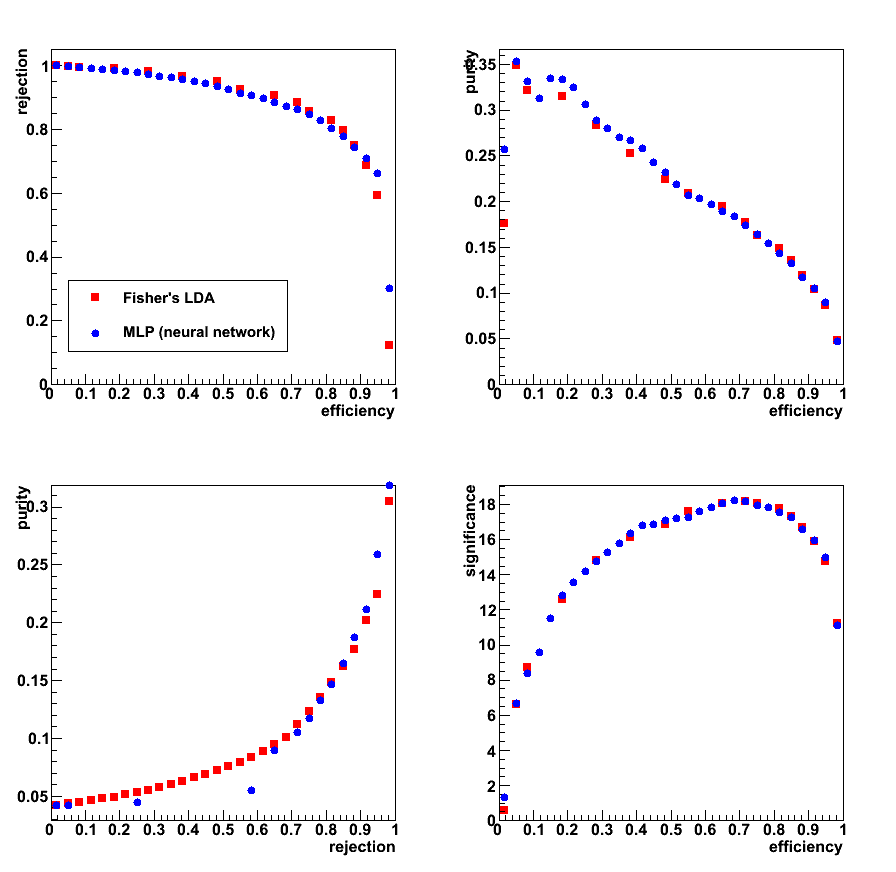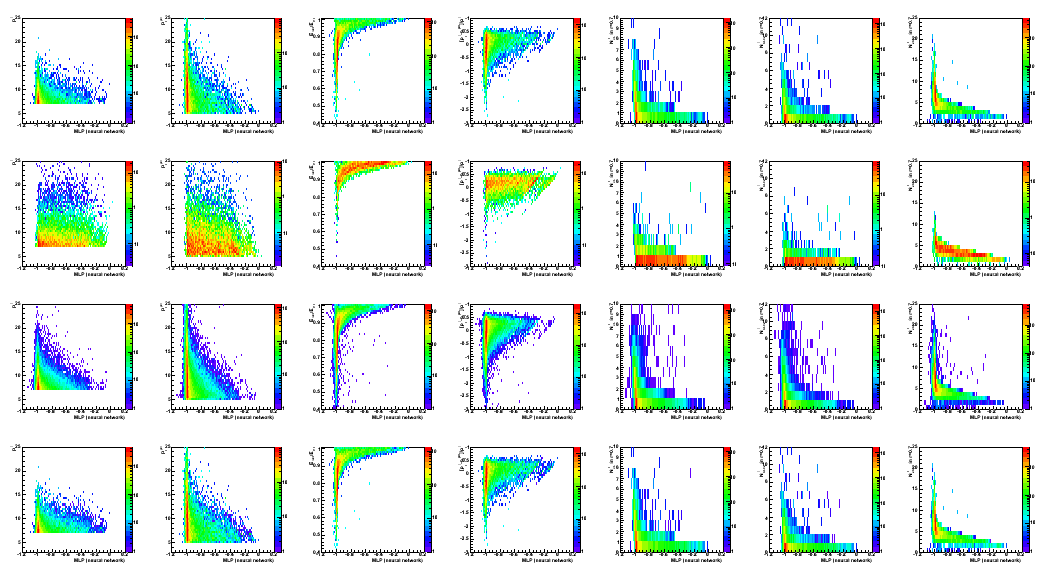2009.03.09 Application of the LDA and MLP classifiers for the cut optimization
Cut optimization with Fisher's LDA and MLP (neural network) classifiers
ROOT implementation for LDA and MLP:
- Fisher's Linear Discriminant Analysis (LDA)
- Multi-Layer Perceptron (MLP) [feed-forward neural network]
Application for cuts optimization in the gamma-jet analysis
LDA configuration: default
MLP configuration:
- 2 hidden layers [N+1:N neural network configuration, N is number of input parameters]
- Learning method: stochastic minimization (1000 learning cycles)
Input parameters (same for both LDA and MLP):
- Energy fraction in 3x3 cluster within a r=0.7 radius: r3x3
- Photon-jet pt balance: [pt_gamma-pt_jet]/pt_gamma
- Number of charge tracks within r=0.7 around gamma candidate
- Number of Endcap towers fired within r=0.7 around gamma candidate
- Number of Barrel towers fired within r=0.7 around gamma candidate
Figure 1: Signal efficiency and purity, background rejection (left),
and significance: Sig/sqrt[Sig+Bg] (right) vs. LDA (upper plots) and MLP (lower plots) classifier discriminants

Figure 2:
- Upper left: Rejection vs. efficiency
- Upper right: Purity vs. efficiency
- Lower left: Purity vs. Rejection
- Lower right: Significance vs. efficiency
Figure 3: Data to Monte-Carlo comparison for LDA (upper plots) and MLP (lower plots)
Good (within ~ 10%) match between data nad Monte-Carlo
a) up to 0.8 for LDA discriminant, and b) up to -0.7 for MLP.

Figure 4: Data to Monte-Carlo comparison for input parameters
from left to right
1) pt_gamma 2) pt_jet 3) r3x3 4) gamma-jet pt balance 5) N_ch[gamma] 6) N_eTow[gamma] 7) N_bTow[gamma]
Colour coding: black pp2006 data, red gamma-jet MC, green QCD MC, blue gamma-jet+QCD

Figure 5: Data to Monte-Carlo comparison:
correlations between input variables (in the same order as in Fig. 4)
and LDA classifier discriminant (horizontal axis).
1st raw: QCD MC; 2nd: gamma-jet MC; 3rd: pp2006 data; 4th: QCD+gamma-jet MC

- Printer-friendly version
- Login or register to post comments


